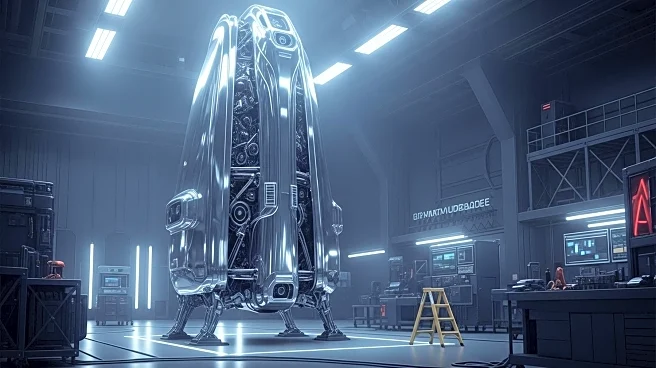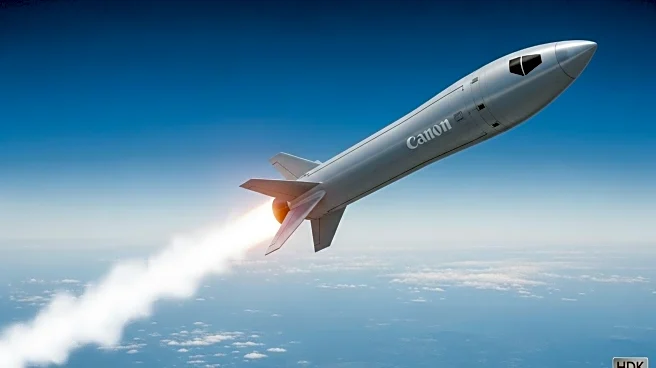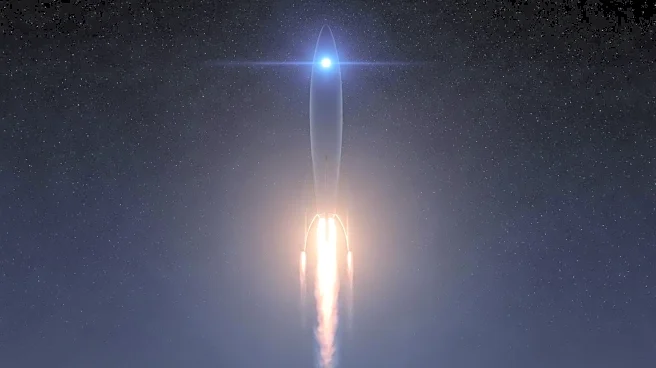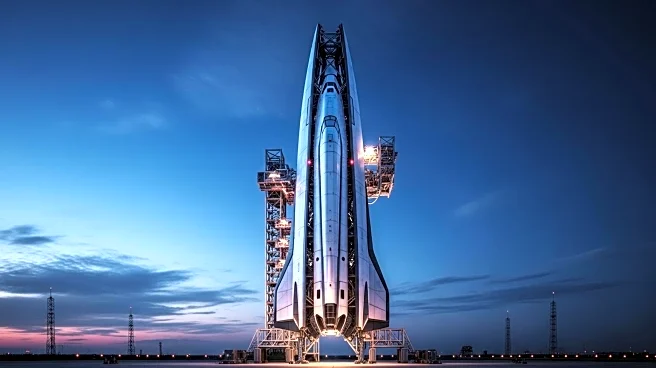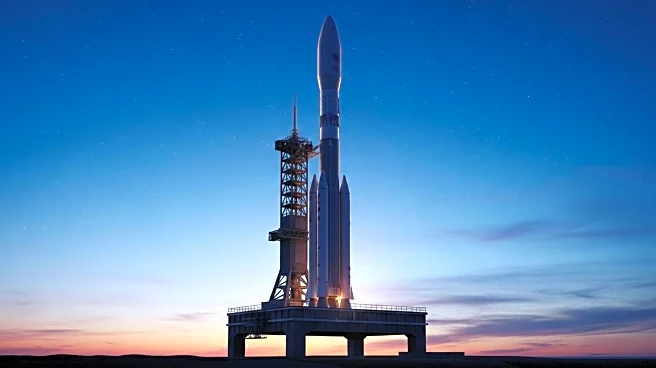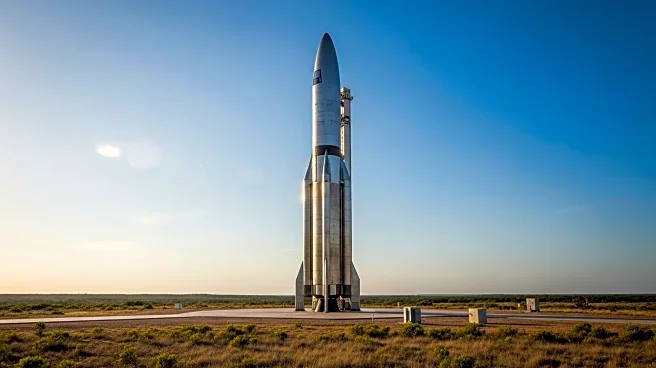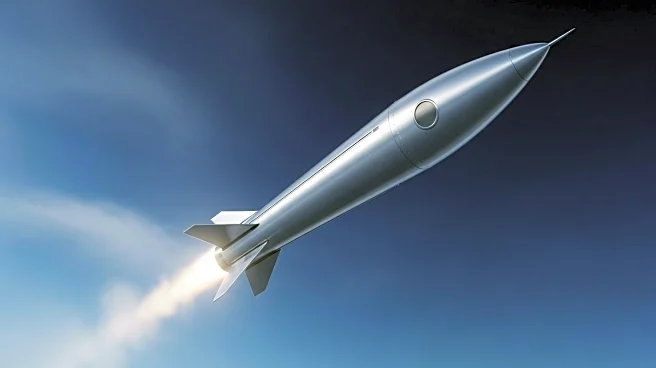What's Happening?
SpaceX has conducted the eleventh test flight of its Starship megarocket, marking a significant milestone in the development of its Version 2 iteration. The test involved the Super Heavy Booster splashing down in the Gulf of Mexico, while the upper stage followed a suborbital arc and reentered the atmosphere for a water landing in the Indian Ocean. This flight aimed to stress-test the rocket's heat shield and demonstrate maneuvers that mimic the behavior of its upper stages during return flights. The test also included the deployment of eight dummy Starlink satellites and a relight of one of its Raptor engines. SpaceX has been working to overcome previous failures and is under pressure to achieve critical development milestones before rolling out Version 3, which is expected to launch in early 2026.
Why It's Important?
The successful test flight of SpaceX's Starship is crucial for the company's goal of developing a fully reusable rocket system. Achieving these milestones is essential for SpaceX to maintain its competitive edge in the aerospace industry and fulfill its ambitious plans for space exploration. The ability to reuse rockets efficiently could significantly reduce costs and increase the frequency of launches, benefiting both commercial and scientific missions. This test also demonstrates SpaceX's commitment to innovation and its ability to overcome technical challenges, which is vital for securing future contracts and partnerships.
What's Next?
Following this test, SpaceX is expected to focus on the development and testing of Version 3 of the Starship, which promises to be larger and capable of carrying more payload to orbit. The next iteration is anticipated to launch in early 2026, and SpaceX will likely continue refining its technology to ensure reliability and safety. The aerospace community and potential clients will be closely monitoring SpaceX's progress, as successful development could lead to increased opportunities for collaboration and expansion into new markets.
Beyond the Headlines
The advancements in SpaceX's Starship program could have broader implications for the future of space travel, including the potential for more sustainable and cost-effective missions to the Moon, Mars, and beyond. The focus on reusability aligns with global efforts to reduce waste and improve the environmental impact of space exploration. Additionally, the success of SpaceX's program could inspire other companies to innovate and invest in similar technologies, potentially accelerating the pace of advancements in the aerospace sector.


